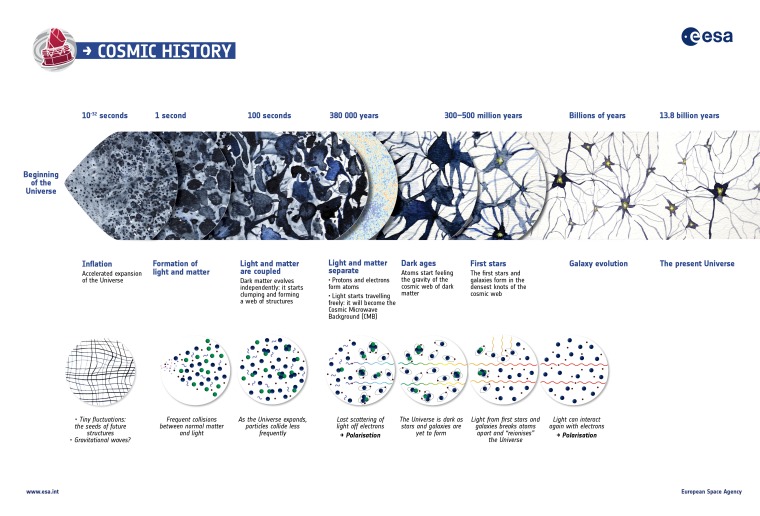Ancient Voyager Satellite Says No for the Smallest Possible
Hawking Radiation
Black holes can come in all sizes from about a billion tons up to billions of solar masses.
Because isolated black holes are difficult to detect, especially smaller mass ones, they have long been considered as candidates for dark matter, invoked to explain the extra gravitational accelerations measured at the outskirts of galaxies.
Stephen Hawking showed that black holes radiate low energy particles very slowly due to quantum thermodynamic effects. So the very lowest mass black holes evaporate away due to Hawking radiation during the life of the universe.
Voyager Satellites
The Voyager satellites were launched in 1977 and NASA has determined that Voyager 1 crossed the heliopause in 2012. This is the boundary for the solar wind, which holds back a large portion of galactic cosmic rays. Voyager 2 crossed the heliopause last year.
Forty-two years after launch, and having toured Jupiter, Saturn, Uranus, and Neptune, these remarkable satellites are still returning valuable data about the outer reaches of the Solar System.
What is the connection between black holes, dark matter, and Voyager 1?
In the early universe, large numbers of so-called primordial black holes (PBHs) of various sizes may have formed. The question arises, could these be the primary component of dark matter?
Primordial Black Holes as Dark Matter Candidates
The detection of gravitational waves from half a dozen mergers of black holes of intermediate mass has given new energy to this idea. Also, there is the continued failure to detect exotic particle candidates for dark matter in Earth-bound laboratory experiments.
A team of Japanese astronomers, searching for microlensing effects with stars in the Andromeda galaxy, have ruled out small black holes in the range of grams up to about 3 times the Earth’s mass. https://darkmatterdarkenergy.com/2017/12/07/primordial-black-holes-and-dark-matter has more detail.
Constraints from other lensing experiments (MACHO, EROS) and the cosmic microwave background appear to rule out more massive primordial black holes as the explanation for most dark matter.
What about the tiniest allowable black holes, from about gm (smaller ones have evaporated already) up to
gm?
Voyager 1 Constraints
With a recent analysis researchers at the Laboratoire de Physique Theorique et Hautes Energies (LPTHE) show that the Voyager 1 satellite now rules out primordial black holes with masses below gm as well, as the source of most dark matter. And it is because of the Hawking radiation that we do not detect.
Although Hawking radiation has never been detected, it is on very firm theoretical grounds that it should exist. Everything, including strange objects like black holes, has a quantum nature.
Smaller black holes radiate at higher temperatures and have shorter lifetimes. The Hawking radiation temperature is
Thus for an gm black hole the Hawking temperature is about 1 MeV. (GeV or giga electron-Volt is a billion eV and around the rest mass energy of a proton, and an MeV or mega electron-Volt is a million eV and about twice the rest mass energy of an electron.)
Since these temperatures are in the MeV range, only very light particles such as neutrinos, electrons, and positrons would be emitted by the PBHs.

Figure 1 from the Boudaud and Cirelli paper shows the observed combined electron and positron cosmic ray flux from Voyager 1 in the energy range from 3 MeV to 50 MeV. It also shows results in the 1 to 10 GeV range from the Alpha Magnetic Spectrometer 2 experiment on the International Space Station (located well inside the heliopause). Two different models of how the energetic particles propagate through the galaxy are used.
Smallest possible Black Holes ruled out
PBHs with or
grams are clearly ruled out; they would inject far too many energetic electron and positron cosmic rays into the interstellar medium that Voyager 1 has entered.
The authors state that no more than 0.1% of dark matter can be due to PBHs of mass less than grams (10 billion tons).
In Figure 1, a monotonic mass distribution was assumed (PBHs all have the same mass). They also consider various log-normal mass distributions and similar constraints on the allowable PBH mass were found.
What about at grams and above? Most mass regions are ruled out.
The mass region above grams and up to about
grams has been excluded as a primary source of dark matter from PBHs by a 2012* result from Barnacka, Glicenstein, and Moderski. They searched for gravitational lensing effects upon gamma ray burst sources due to intervening black holes.
So vast ranges of possible PBH masses are ruled out. However the mass region from up to
grams remains a possibility as a dark matter hideout for PBHs.
*The same year that Voyager 1 crossed the heliopause, coincidentally
References
Boudaud, M. And Cirelli, M. 2019 “Voyager 1 electrons and positrons further constrain primordial black holes as dark matter” https://arxiv.org/abs/1807.03075
https://darkmatterdarkenergy.com/2017/12/07/primordial-black-holes-and-dark-matter/
Barnacka, A., Glicenstein, J.-F., Moderski, R. 2012 “New constraints on primordial black holes abundance from femtolensing of gamma-ray bursts” http://arxiv.org/abs/1204.2056











